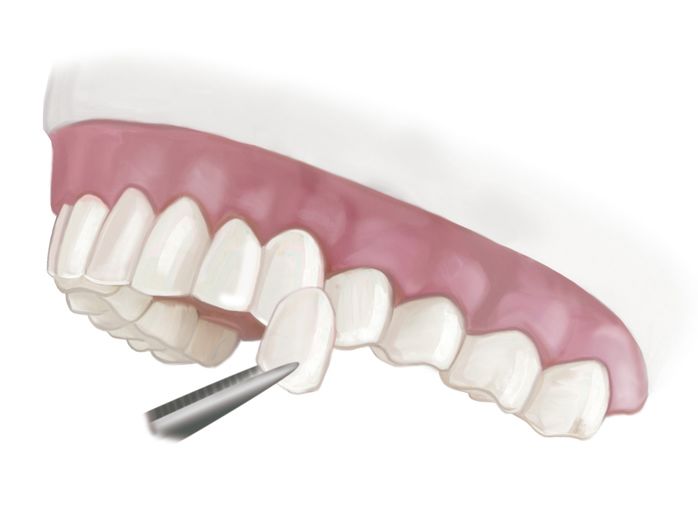History of Porcelain Veneers
 Chips, cracks, discoloration, and other cosmetic dental issues can make a healthy smile look unattractive. These issues can be addressed with porcelain veneers, a popular cosmetic dentistry treatment available at our Troy, MI dental practice.
Chips, cracks, discoloration, and other cosmetic dental issues can make a healthy smile look unattractive. These issues can be addressed with porcelain veneers, a popular cosmetic dentistry treatment available at our Troy, MI dental practice.
Here, our team at the Cosmetic Dentistry Institute explores the history of porcelain veneers and explains how the veneers we use today became popular.
A Quick Review of Porcelain Veneers
Super strong yet ultra-thin, porcelain veneers are designed to fit over the front portions of the teeth. These custom shells conceal a wide range of aesthetic flaws, and can bring beauty, balance, and symmetry back to a smile.
To place porcelain veneers, your dentist must first remove small amounts of enamel from the teeth. Next, he or she will take impressions and send them to a lab, where a skilled technician will fabricate your new veneers.
Charles Pincus: Hollywood’s Cosmetic Dentist
In the 1920s, Dr. Charles Pincus provided dental care for Hollywood’s elite. Many of these celebrities needed brighter, whiter smiles for the cinema.
In 1928, Dr. Pincus discovered a way to make this a reality. He attached acrylic material to the front surfaces of the teeth and temporarily held them in place with a special adhesive.
Of course, these veneers only stayed in place for an hour or two and were removed when the actors and actresses were finished filming their scenes.
1930s - 1940s
Over the next two decades, dentists began to realize that the general public could benefit from veneers as well.
During this time, dentists began fabricating veneers from porcelain and composite. These materials were incredibly natural-looking. However, bonding them successfully to the teeth was a significant challenge.
It was virtually impossible to bond the veneers to the teeth for more than an hour at a time. As a result, veneers were not a realistic option for those interested in permanently improving their smile.
1950s - 1980s
In the 1950s, dental etching was discovered. Dr. Michael Bunocore applied a slightly acidic solution to the teeth to roughen the enamel. This created a stronger bonding surface for the veneers.
In the early 1980s, the discoveries of Bunocore were combined with the research of two doctors names J.R. Calamia and R.J. Simonsen. They introduced the idea of using dental etch and bonding resins to improve the longevity of porcelain veneers.
Modern Veneers
The etching and bonding techniques developed by Bunocore, Simonsen, and Calamia are still in use today. In addition, modern veneers are more stain-resistant and natural-looking than ever before.
Once bonded into place, porcelain veneers can last upwards of 20 years with proper care and maintenance.
Contact Our Practice
Are you curious about porcelain veneers? If you are looking to enhance the appearance of your smile, this treatment option could be right for you. To learn more, or to schedule a visit at our practice, call us at (248) 519-1919 or contact us online anytime.


